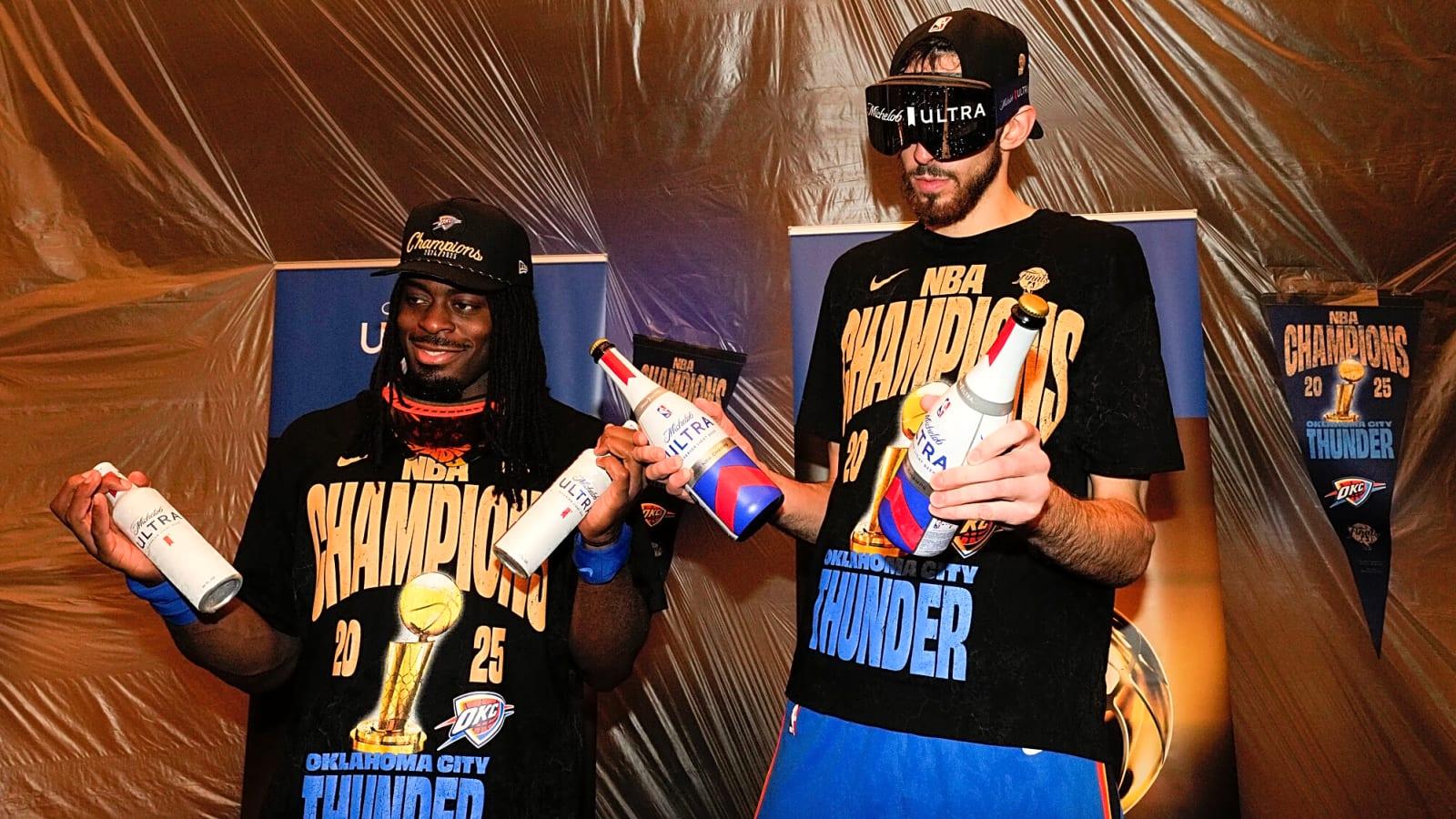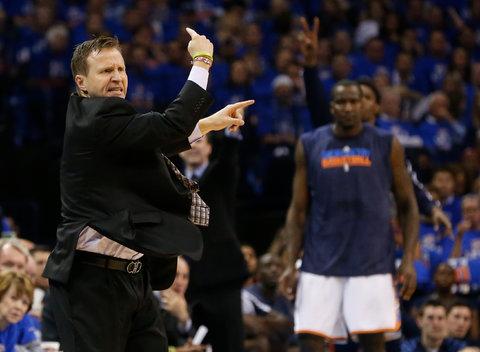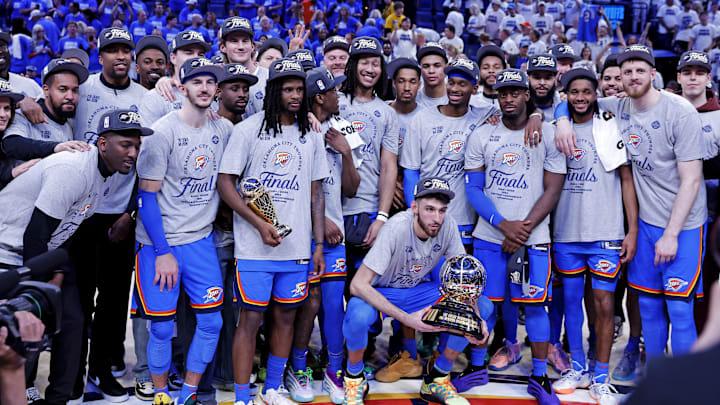In a season packed with electrifying moments and unforgettable upsets, the Oklahoma City Thunder have risen to claim the ultimate prize: the NBA championship. Yet, as the confetti settles and echoes of celebration fade, a compelling question lingers in the minds of fans and analysts alike – did the best team truly win it all? Beyond the scoreboard and trophy presentation, “The Facility” delves deeper into the nuances of this triumphant campaign, exploring the metrics, narratives, and intangibles that define greatness in professional basketball. Join us as we dissect the Thunder’s journey, challenging conventional wisdom and reexamining what it means to be champions in today’s NBA landscape.
OKC Thunder’s Championship Journey Analyzing Key Factors Behind Their Victory
The Oklahoma City Thunder’s rise to the NBA championship podium was not merely a tale of talent but one of strategic brilliance and sheer resilience. At the core of their success lay a finely-tuned blend of veteran leadership and youthful exuberance that overwhelmed opponents on both ends of the court. Elite defense, orchestrated by the likes of Shai Gilgeous-Alexander and complemented by the defensive tenacity of players like Josh Giddey, created a fortress that few teams dared challenge. Offensively, their fluid ball movement and dynamic scoring options kept defenses guessing, with multiple players stepping up to deliver in clutch moments. This balance and versatility became a defining hallmark of their title run.
Key factors behind their triumph extend beyond sheer skill. The Thunder demonstrated exceptional adaptability, with coach Mark Daigneault expertly adjusting lineups and tactics to exploit opponents’ weaknesses. This was mirrored in their unselfish playstyle, emphasizing:
- Team chemistry: A foundational trust that translated into seamless on-court synergy.
- Depth of bench contribution: Role players consistently stepped up, maintaining intensity even when starters rested.
- Mental toughness: Overcoming adversity and pressure situations with poise.
These elements combined to form a championship formula that was as much about heart and mindset as it was about athletic prowess.
Evaluating Team Performance Metrics Did Statistical Dominance Predict the Outcome
When dissecting the Thunder’s championship run through the lens of advanced metrics, the narrative becomes intriguingly complex. On paper, their statistical dominance in key areas-such as defensive rating and assist-to-turnover ratio-painted the picture of a well-rounded, efficient team. The squad consistently outperformed opponents in three-point percentage and pace control, aspects that often correlate strongly with winning outcomes. However, a deeper dive reveals that the difference in several critical categories was marginal at best. While their regular-season stats boasted reliability and consistency, clutch performance metrics and late-game efficiency sometimes lagged behind those of their fiercest rivals.
Key indicators examined include:
- Offensive Efficiency: Ranking in the NBA top 10, underscoring consistent scoring ability.
- Defensive Versatility: Ability to switch and rotate effectively, limiting opponent high-percentage shots.
- Rebounding Margins: Slight edge in defensive boards, crucial for controlling possession.
- Player Impact Estimate (PIE): Highlighted the influence of their core rotation players during pivotal moments.
Yet, it was the intangible factors-the chemistry under pressure, adaptability to unpredictable scenarios, and mental fortitude-that arguably propelled the Thunder above raw numbers. Statistical dominance laid the foundation, but the ultimate triumph was secured by a blend of strategy, experience, and timing that metrics alone can’t fully quantify.
The Role of Coaching and Strategy How Tactical Decisions Shaped the Finals
In the intense crucible of the NBA Finals, coaching decisions often serve as the unseen chess moves that shape the outcome as much as player performances. OKC’s head coach demonstrated masterful adaptability, meticulously adjusting defensive schemes to neutralize the opposition’s key threats. By deploying a switch-heavy defense and timely zone variations, the Thunder disrupted their opponent’s rhythm, forcing contested shots and turnovers at critical junctures. These tactical gambits not only stifled the rival team’s offensive flow but also empowered OKC’s stars to capitalize in transition-illustrating the profound impact strategy exerts beyond the stat sheet.
Offensively, the game plan emphasized spacing and ball movement that maximized OKC’s strengths while exploiting defensive weaknesses. In practice, this meant orchestrating set plays that created mismatches and opened lanes for penetration or kick-outs to sharpshooters. The coaching staff’s foresight in identifying and adapting to mid-series adjustments by their opponents allowed for fluid countermeasures, including:
- Rotational changes that enhanced bench productivity and sustained pressure.
- Timeout management to disrupt momentum shifts and reset team focus.
- Tailored defensive assignments focusing on key playmakers.
These elements collectively underscore how the Thunder’s tactical acumen was integral to clinching the championship-proving that beyond raw talent, it was the cerebral command from the sidelines that shaped the Finals’ narrative.
Lessons for Future Contenders Strategic Recommendations for Building a Championship Team
Building a championship-caliber squad goes beyond just assembling star talent-it requires a meticulous blend of culture, adaptability, and long-term vision. Future contenders should prioritize cultivating a resilient team ethos where accountability and trust coexist with a hunger for innovation. Organizations must embrace a data-driven yet human-centric approach, balancing advanced analytics with the invaluable insights gleaned from seasoned professionals who understand the nuances of locker room chemistry. A cohesive front office and coaching staff aligned on the franchise’s philosophy lays the foundation upon which sustainable success is constructed.
Leveraging versatility on the roster is equally crucial. Beyond traditional positional roles, the modern NBA demands players capable of switching defensively, creating offense off the dribble, and impacting the game from multiple angles. Teams should target athletes who bring not only skill but an ability to evolve and thrive under pressure, reflecting the adaptive blueprint evidenced in OKC’s championship run. Additionally, nurturing young talent through meaningful minutes and targeted development investments ensures a pipeline of contributors ready to elevate when opportunity strikes, creating a dynamic, championship-winning roster that withstands the test of postseason battles.
As the final buzzer echoed through the arena and the confetti settled on the hardwood, the OKC Thunder’s championship triumph was undeniable-a testament to grit, talent, and unyielding resolve. Yet, the question lingers in the air like a whispered challenge: Did the best team truly claim the crown? In the realm of basketball, greatness isn’t measured by trophies alone but by the narratives woven through every possession, every clutch shot, and every defensive stand. The Thunder’s victory certainly cements their legacy, but the debate over supremacy reminds us that in this beautiful game, greatness is as much about debate as it is about celebration. And so, as we close this chapter, the answer remains a thrilling enigma-inviting fans and analysts alike to keep the conversation alive, long after the final whistle.






